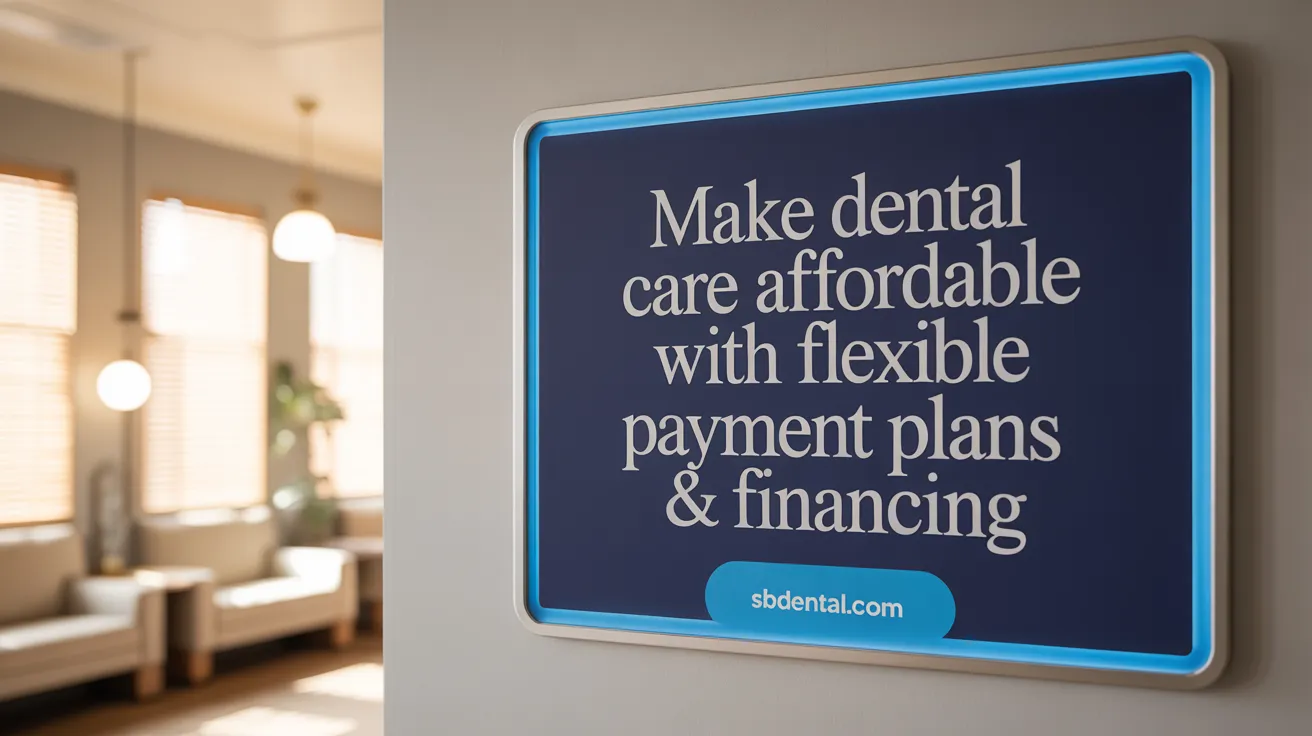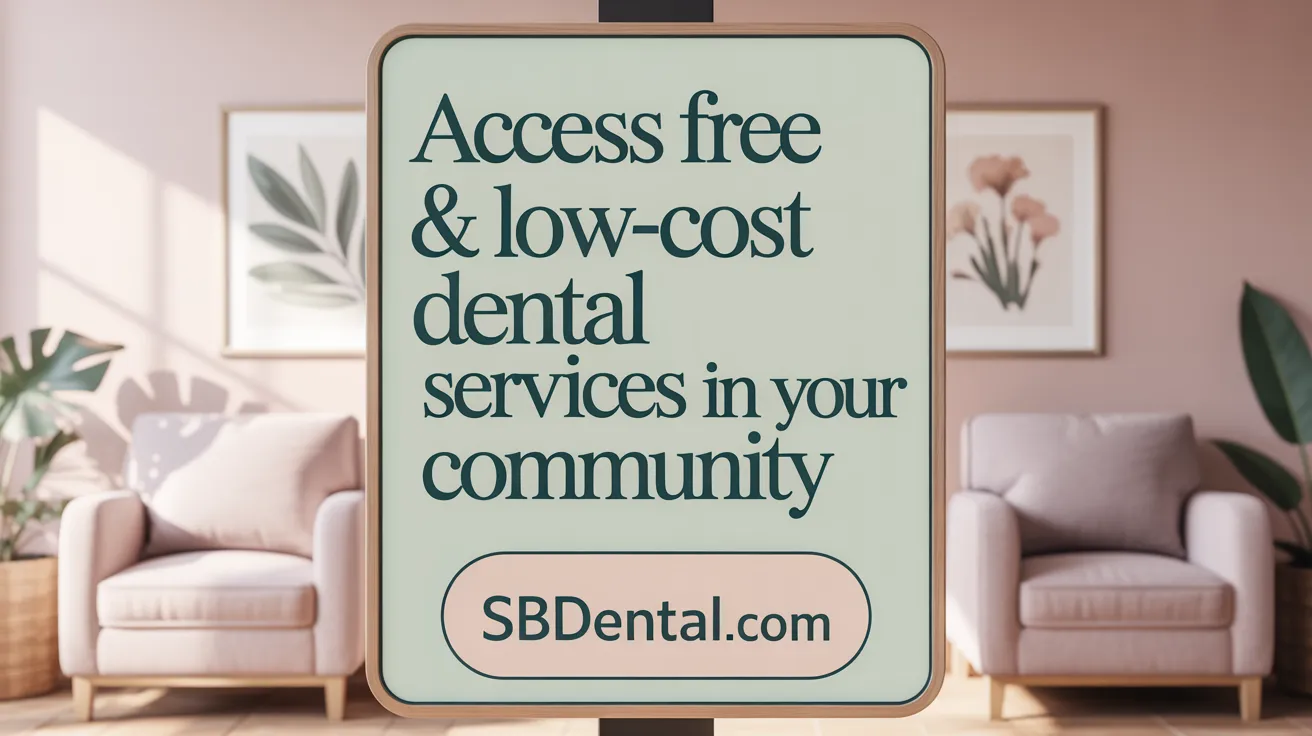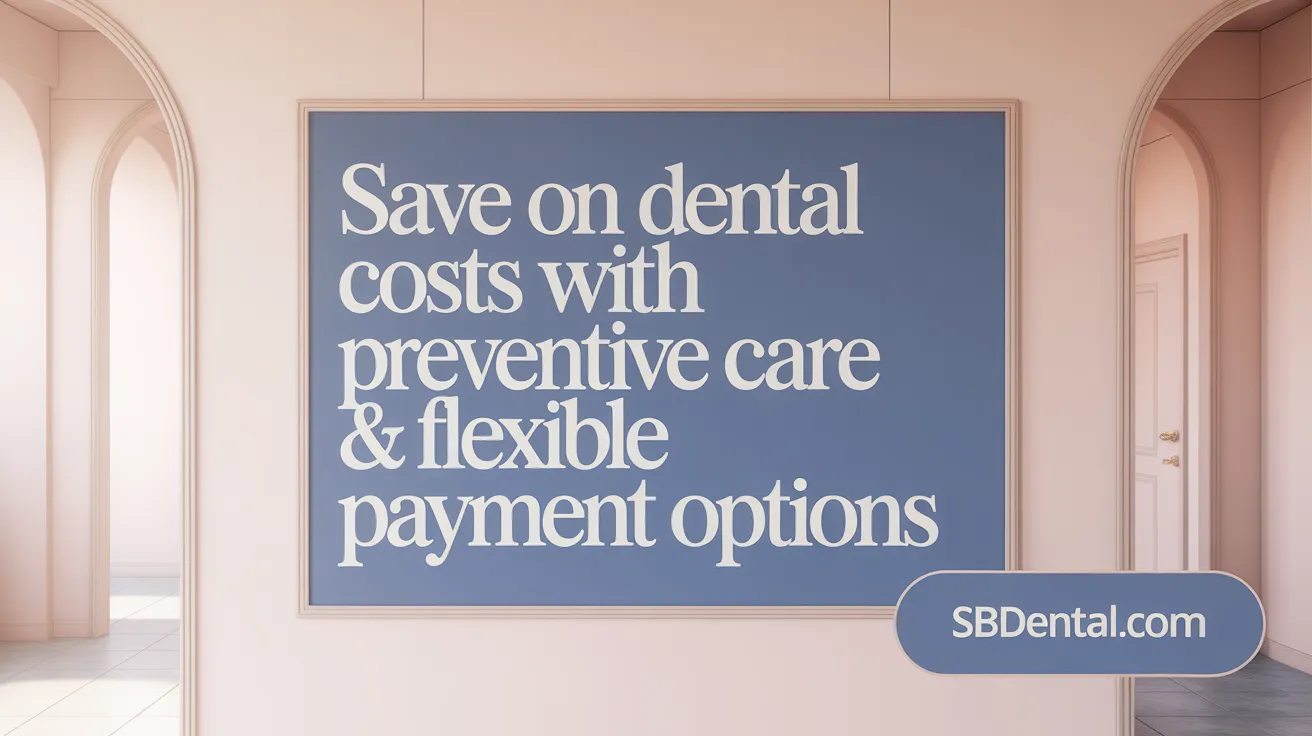Navigating the Costs and Financing of Dental Treatments
Dental care is essential for overall health, yet costs can be prohibitive for many. Understanding the various affordable dental care options and financing plans can empower individuals to access necessary treatments without undue financial stress. This article explores the range of payment solutions, insurance plans, and community resources that make dental care accessible to more people.
Flexible Payment Plans and Financing Solutions

What are flexible payment plans and how do they work?
Flexible payment plans allow patients to manage the cost of dental procedures by breaking down the total into smaller, affordable monthly payments. These plans are often tailored to fit individual financial situations and needs. They might be offered directly by dental offices as in-house dental financing or through external third-party healthcare financing. Many plans include interest-free dental payment options if the payments are completed within a specified promotional period, easing the financial burden and encouraging timely treatment.
In-house financing options
Dental practices often provide in-house financing, which can offer faster approval with fewer credit requirements compared to outside lenders. These options give clinics control over payment schedules and help maintain personalized patient relationships. However, practices must carefully manage such programs to comply with federal and state laws.
What third-party financing options are available for dental care?
Several third-party companies facilitate dental financing, including well-known providers such as CareCredit dental financing, LendingClub dental loans, GreenSky healthcare financing, and Sunbit patient financing solutions. These companies offer dental credit cards or loans that make treatments more affordable by allowing payments over time. Patients benefit from quick application processes, often with no credit impact pre-qualification, and access to interest-free promotional periods. These options are widely accepted across many dental offices nationwide, covering a broad variety of procedures—from cleanings and fillings to implants and cosmetic work.
Interest-free payment options
Many financing programs offer deferred interest plans, where no interest is charged if the balance is paid in full within promotional terms, typically ranging from 6 to 24 months. This arrangement helps patients avoid extra costs while spreading payments over time.
Dental savings plans
Dental savings plans are another financing alternative. For an annual fee, these plans provide dental discounts with savings plans without the need for credit checks. They are especially useful for those who want predictable savings on routine and specialty care without traditional insurance complexities.
Use of HSAs and FSAs for dental expenses
Using HSAs for dental expenses and using FSAs for dental care allow patients to use pre-tax dollars for dental treatments. Combining these accounts with flexible payment plans optimizes affordability by lowering overall out-of-pocket expenses.
Benefits of flexible payment plans
Flexible payments expand access to dental care by removing financial barriers. They encourage patients to undergo necessary and preventive treatments promptly, supporting better oral health. Additionally, these plans assist patients in managing dental costs with payment plans, reducing the stress of lump-sum payments and emergency dental expenses.
Dental Financing Fundamentals and Loan Options

What should patients know about dental credit cards and loans?
Dental credit cards function as revolving lines of credit designed specifically for dental expenses. They often come with promotional no-interest periods, allowing patients to finance treatments like cleanings, crowns, or implants without immediate interest if paid within a set timeframe. On the other hand, dental loans are unsecured personal loans with fixed monthly payments and generally have lower interest rates compared to credit cards. They provide a set length of time, known as the loan term, over which the loan will be repaid.
Understanding some common financing terms is essential. The principal is the initial amount borrowed, while interest is the fee charged for borrowing, usually calculated as a percentage of the principal. Deferred interest means interest is waived if the loan is repaid within a promotional period; otherwise, retroactive interest may be applied. The loan term is the repayment period, influencing monthly payment amounts and overall interest paid.
Learn more about Dental Credit Cards and Financing Options and how dental loans work at Bankrate's Dental Loans Guide.
How does credit score affect dental financing?
A patient's credit score significantly impacts their ability to secure financing and influences interest rates and loan terms. Higher credit scores typically result in more favorable rates and better financing options. Lenders evaluate credit history based on repayment history, amount owed, length of credit history, types of credit used, and recent credit inquiries.
Many dental financing programs now offer prequalification processes that don't affect credit scores, giving patients the chance to explore options without risk. This approach helps patients find suitable payment plans while maintaining their credit integrity.
For details on credit score impact and prequalification, visit Aspen Dental Financing and CareCredit Patient Financing.
Benefits of same-day approval and application
Most dental financing options, especially through third-party lenders, allow patients to apply and receive approval on the same day—often during their dental visit. This quick approval process, frequently done without a hard credit check, empowers patients to begin their needed treatments immediately, easing financial barriers to dental care.
Explore quick patient financing solutions with Sunbit Dental Financing or learn about same-day approvals at Aspen Dental Financing.
Comparison of interest rates between dental loans and credit cards
Dental loans often feature lower fixed interest rates, sometimes around 12.64%, compared to dental credit cards, which can have rates exceeding 20% after promotional periods end. For patients seeking predictable monthly payments and total costs, dental loans may be more cost-effective. Conversely, dental credit cards offer flexibility and revolving credit but may become costly if balances are carried beyond no-interest periods.
Selecting between dental credit cards and loans depends on individual financial situations, treatment costs, and repayment capabilities. Patients should carefully review terms, interest rates, and fees to choose the most affordable and manageable financing solution.
For more information on comparing dental financing options, see Bankrate's Dental Loan Comparison and CareCredit Dental Financing.
Insurance Plans and Marketplace Dental Coverage

What types of dental insurance plans are available and what do they cover?
Affordable dental insurance plans come in a range of options to suit different needs and budgets. Basic plans often focus on preventive care, such as routine cleanings and fluoride treatments, typically offered with no deductible or waiting periods. More comprehensive plans provide coverage for basic services like fillings and emergency treatments, as well as major services including root canals, retainers, and dental implants. These higher-level plans may come with deductibles, waiting periods, and coinsurance requirements.
Some insurers offer bundled dental, vision, and hearing plans, streamlining multiple health needs into a single package. Dental care for children under 18 is recognized as an essential health benefit, meaning that plans serving this group must include dental coverage either within the health plan or as a separate plan. In contrast, dental coverage for adults is not mandated and varies across available plans.
How does dental coverage through the Health Insurance Marketplace work?
Dental coverage in the Health Insurance Marketplace is flexible and consumer-focused. Coverage can be included within a health insurance plan or purchased as a separate dental plan. Separate dental plans require their own premium payments and can be canceled at any time, providing additional flexibility to consumers. However, dental benefits integrated into a health insurance plan cannot be removed independently—they may only be changed or canceled by switching health plans during open or special enrollment periods.
Marketplace dental plans come in two general tier levels: high and low coverage. High coverage plans involve higher premiums but offer lower copayments and deductibles, whereas low coverage plans have more affordable premiums but higher out-of-pocket costs. This tiered approach allows consumers to balance cost against coverage based on their personal or family dental care needs.
Enrollment in these plans typically occurs during the annual Open Enrollment Period or if an individual qualifies for a Special Enrollment Period due to specific life events. Consumers can compare plan costs, coverage details, and provider networks to select an option tailored to their oral health needs and budget.
Consumers are encouraged to consider the full scope of dental benefits, including preventive services, basic and major treatment coverage, and how these align with overall health insurance plans, especially when dental, vision, and hearing packages are available together.
This flexibility and variety in Marketplace dental insurance options help improve access to dental care while giving consumers meaningful choices in how they protect their oral health.
Accessing Low-Cost and Free Dental Care Resources

Where can individuals find free or low-cost dental care?
Affordable dental care is accessible through a variety of community and institutional resources. Community health centers and Federally Qualified Health Centers (FQHCs) provide dental services on a sliding fee scale based on income, targeting underserved and rural populations. These centers adjust costs according to patients' financial situations, making dental care more attainable for low-income individuals (Free dental care options, Low-cost dental care options).
Dental schools and dental hygiene clinics present another valuable option. Services are offered at reduced rates, often covering only the cost of materials, while dental students perform treatments under the close supervision of licensed professionals. This not only reduces costs but also provides quality care (Dental school clinics, Dental Schools for Affordable Care).
Several nonprofit organizations, such as the Dental Lifeline Network and America’s Dentists Care Foundation, offer reduced-cost or free dental services, particularly focused on seniors, individuals with special needs, and those with serious illnesses. Their charitable programs aim to fill gaps in dental care access for vulnerable populations (Nonprofit dental care organizations).
For children and teenagers, programs like Medicaid and the Children’s Health Insurance Program (CHIP) provide free or low-cost dental benefits, with eligibility based on income. Additionally, community-based initiatives such as Give Kids A Smile host events where volunteer dental professionals deliver complimentary dental health education, screenings, and treatments (Medicaid dental benefits, CHIP dental benefits, Give Kids A Smile program.
Together, these programs and providers support underserved populations by reducing barriers to dental care, enhancing oral health equity, and promoting access to essential dental services within communities (Finding Dental Care, Community dental resources).
Effective Strategies for Managing Dental Treatment Costs

What strategies help patients manage dental care costs effectively?
Managing dental treatment costs effectively involves several proactive steps.
Benefits of preventive dental care
Regular dental exams, cleanings, and good oral hygiene help prevent tooth decay and other issues that could lead to expensive procedures. By maintaining oral health, patients reduce the likelihood of needing costly treatments like root canals or implants.
Using HSAs and FSAs to pay for treatments
Health Savings Accounts (HSAs) and Flexible Spending Accounts (FSAs allow use of pre-tax dollars to cover dental expenses. This tax advantage stretches patients' funds further, making payment for dental care more manageable.
Importance of second opinions to avoid unnecessary costs
Seeking a second opinion helps confirm diagnoses and treatment plans. This step can prevent patients from undergoing unnecessary or overly expensive procedures. Getting multiple loan quotes or a second opinion can help reduce dental costs as noted in the Bankrate resource.
In-office payment policies and patient education
Dental practices that clearly communicate payment options, including in-house financing and membership savings plans, help patients feel informed and comfortable. This transparency leads to higher acceptance of treatment plans and better financial planning.
Selecting appropriate financing based on credit and needs
Options like dental credit cards, third-party financing, and dental loans can be tailored to patient credit scores and financial situations. Many providers offer interest-free dental payment options or flexible terms, enabling affordable monthly payments.
Dental membership plans and discounts
Membership or savings plans offer discounted dental services for a fixed annual fee, often without credit checks. These include dental savings plans or no credit check dental plans, which make routine care more affordable and encourage timely treatment.
Together, these strategies support patients in accessing necessary dental care while managing costs effectively through informed choices and available financial tools.
Making Dental Care Accessible Through Informed Financing Choices
Understanding the diversity of affordable dental care options and financing plans empowers patients to make informed decisions that protect both their oral health and financial wellbeing. By exploring insurance choices, flexible payment plans, low-cost community resources, and prudent cost management strategies, individuals can overcome financial barriers and access the dental treatments they need. Dental care providers and patients alike benefit from transparent communication and tailored financing solutions that promote timely treatment and improved overall health.
